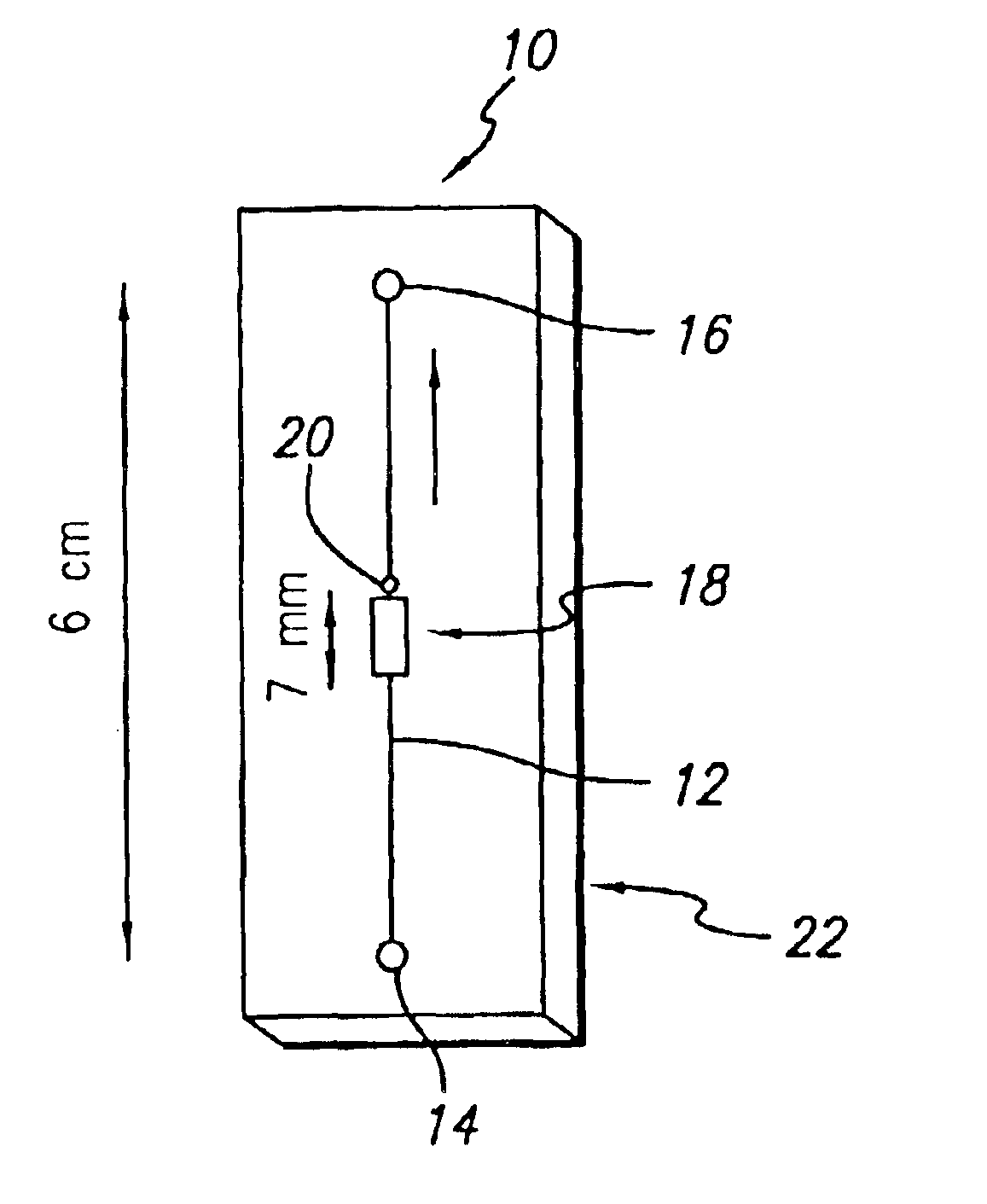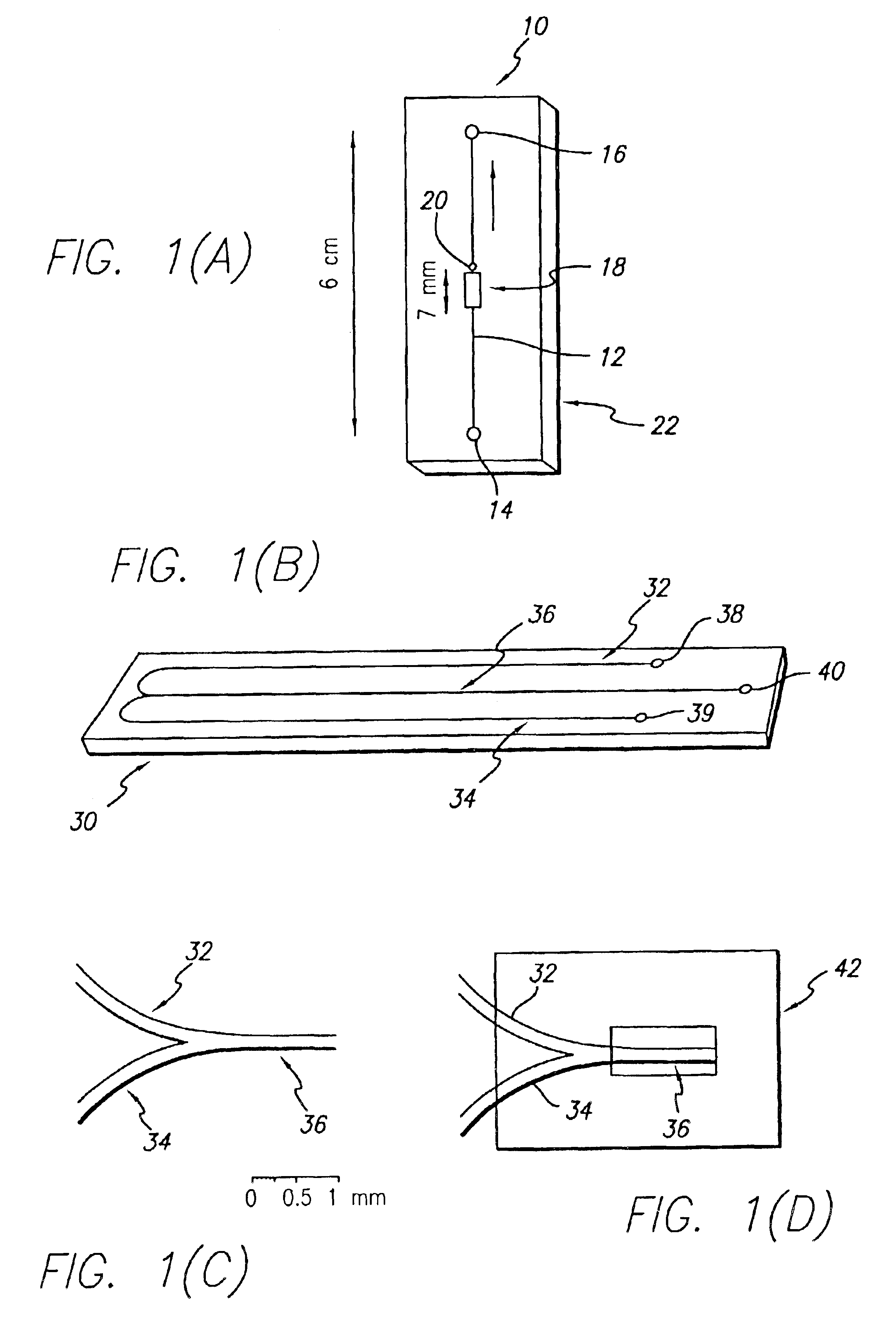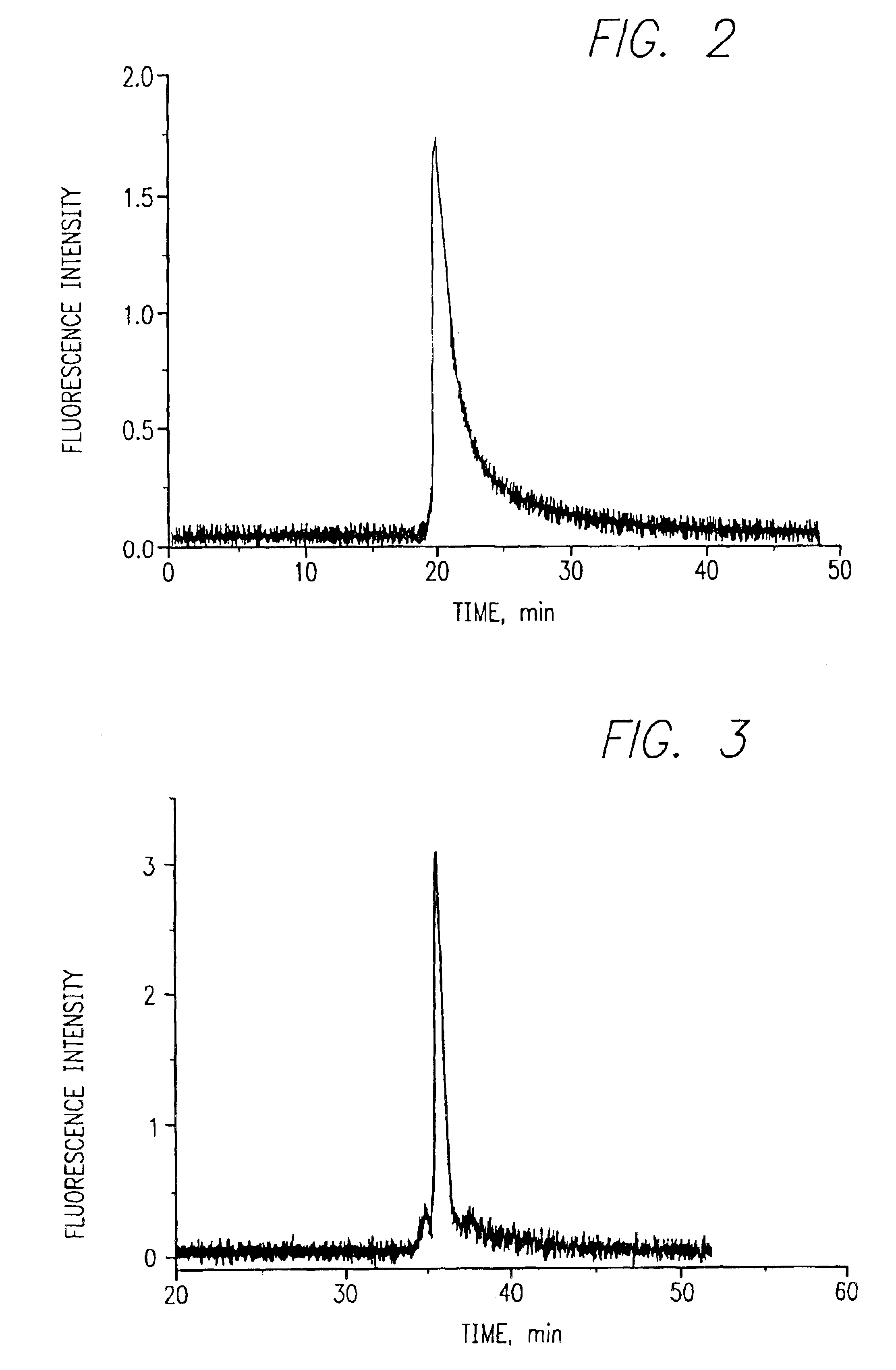Monolithic microfluidic concentrators and mixers
- Summary
- Abstract
- Description
- Claims
- Application Information
AI Technical Summary
Problems solved by technology
Method used
Image
Examples
example 1
Fabrication of Microfluidic Device for Solid Phase Extraction in Ion-Exchange Mode
[0165]A simple straight microchannel 100 μm wide, 40 μm deep, and 6 cm long etched in a borosilicate glass and covered with another bonded glass plate was washed with acetone, water, and filled with 0.2 mol / L NaOH for 30 min, washed with water, filled with 0.2 mol / L HCl for 30 minutes, washed again with water and acetone, and dried in an oven at a temperature of 120° C. for 1 hour. The microchannel was then vinylized by filling the microchannel with a 30% solution of 3-(trimethoxysilyl)propyl methacrylate in acetone and allowed to react at room temperature in the darkness for 24 hours. The vinylized microchannel was then washed with acetone and dried using a stream of nitrogen.
[0166]Polymerization mixture was prepared by dissolving 0.48 g ethylene dimethacrylate, 0.59 g 2-hydroxyethyl methacrylate, 0.15 g [2-(methacryloyloxy)ethyl]trimethyl ammonium chloride, and 12 mg azobisisobutyronitrile in a mixtu...
example 2
Solid Phase Extraction of Small Molecules in Ion Exchange Mode
[0170]A 600 μmol / L stock solution of Coumarin 519 (Sigma, St. Louis, Mo.) was prepared by dissolving 8.6 mg of this compound in 50 mL of acetone. The stock solution was then diluted with deionized water to give a final concentration of 10 nmol / L. A 200 μL injection loop was filled with this solution and this solution pumped through the ion-exchange concentrator of Example 1 at a flow rate of 3 μL / min.
[0171]The adsorbed Coumarin 519 was eluted using 10 s long pulses of 0.5 mol / L aqueous sodium salicylate at a flow rate of 203 nL / min to create a peak shown in FIG. 2.
[0172]These conditions afford almost complete elution and a concentration enhancement by a factor of 190. The concentrating function of the device was regenerated by washing the monolith within the microchannel with a 1:1 mixture of 0.1 mol / L HCl and acetonitrile.
[0173]Release of the Coumarin 519 probe from the concentrator was monitored by measuring the intensi...
example 3
Microfluidic Device For Solid Phase Extraction in Hydrophobic Interaction Mode
[0176]The microfluidic device for solid phase extraction in the hydrophobic interaction mode was prepared using procedure identical with that of Example 1 except that the polymerization mixture was prepared by mixing 0.46 g of ethylene dimethacrylate (Sartomer, Exton, Pa.), 0.72 g butyl methacrylate, 12 mg azobisisobutyronitrile, 2.52 g methanol, and 1.08 g hexane. After purging with nitrogen, in situ photopolymerization, and washing using methods described in Example 1, the resulting monolith has a pore diameter of 19.5 μm.
PUM
| Property | Measurement | Unit |
|---|---|---|
| Temperature | aaaaa | aaaaa |
| Temperature | aaaaa | aaaaa |
| Length | aaaaa | aaaaa |
Abstract
Description
Claims
Application Information
 Login to view more
Login to view more - R&D Engineer
- R&D Manager
- IP Professional
- Industry Leading Data Capabilities
- Powerful AI technology
- Patent DNA Extraction
Browse by: Latest US Patents, China's latest patents, Technical Efficacy Thesaurus, Application Domain, Technology Topic.
© 2024 PatSnap. All rights reserved.Legal|Privacy policy|Modern Slavery Act Transparency Statement|Sitemap



